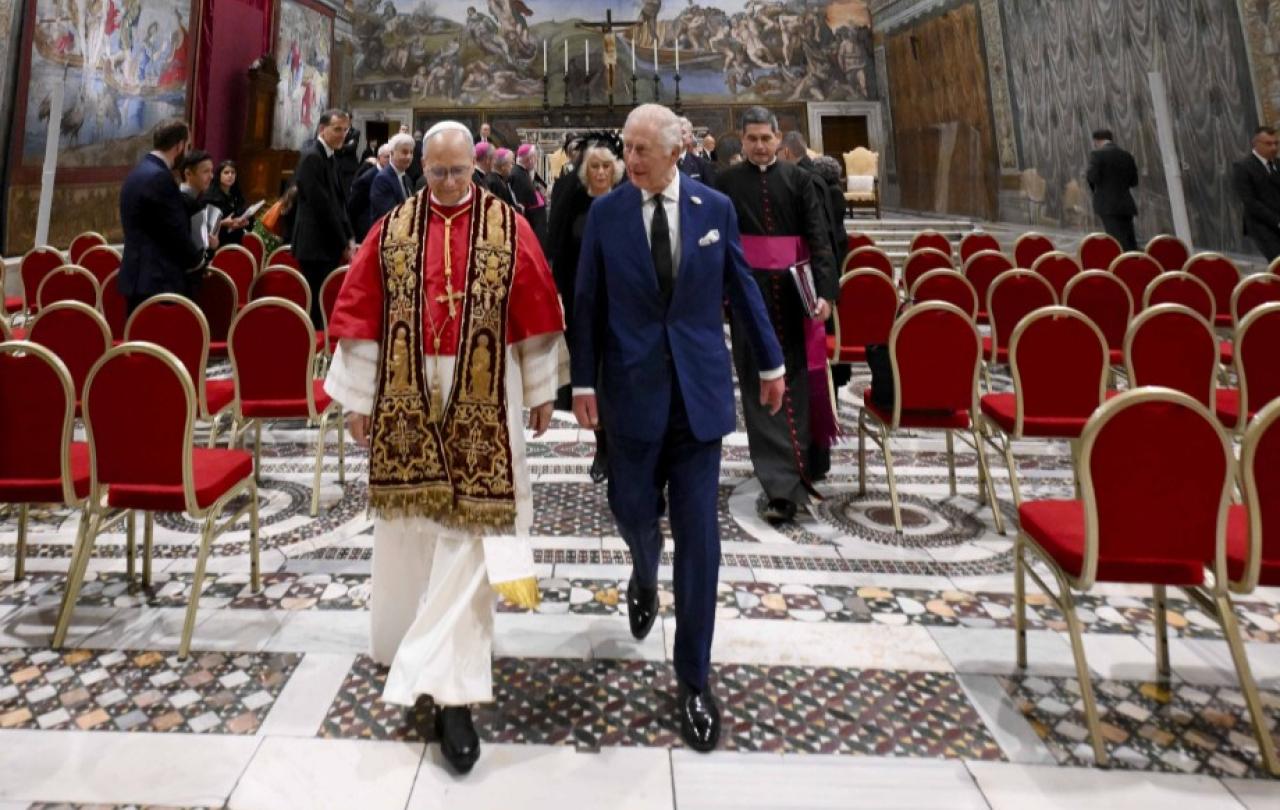
The killing of Charlie Kirk has shaken most of us – including me. Over the past year or so, his pop-up debates on US university campuses kept appearing on my different social media channels, and they were fascinating. Here was a young, articulate conservative, venturing into college campuses – generally left-leaning, progressive places - opening up conversation, debate and challenge. He was opinionated, provocative, unafraid to voice unpopular opinions, generated hostility, but seldom seemed to show it himself. No question was off limits, he seemed to respect those who attacked him, and he made no secret of his Christian faith.
I agreed with some of what he said but by no means all of it – that’s the point of public debate. His views on gun control, Israel, and Donald Trump just for starters, would be some way from mine. But inviting debate on controversial issues, seeking to change other people’s minds by discussion and reasonable argument is the very heart of a well-functioning democracy. There are precious few spaces where progressives & conservatives talk – and Charlie Kirk’s campus debates were one of them. It’s tragic that they cost him his life.
In our times, such heinous acts are not usually committed by some secret, politically-motivated cabal, but often by an unhinged or deluded self-radicalised loner, influenced by fringe groups in politics or culture. In the UK, Axel Rudakubana, who killed three young girls in Southport, turned out not to be a terrorist after all (“he did not kill to further a political, religious or ideological cause” said the judge on sentencing) but a disturbed and lonely young man who killed for no apparent reason other than mental instability. The same was true for Ali Harbi Ali who stabbed the Conservative MP David Amess, Sirhan Sirhan who shot Robert F Kennedy, James L. Ray who murdered Martin Luther King, even (despite all the conspiracy theories) Lee Harvey Oswald who killed John F. Kennedy. All of them fit this category of lonely, unbalanced people who kill because of some grievance, sometimes loosely politically motivated, but usually acting alone. Conspiracy theories are alluring, but usually unfounded.
It's tempting when something like this happens to draw all kinds of wider political and cultural lessons. And there have been no shortage of them over these past days. “Because they could not prove him wrong, they murdered him” went one trope. The problem with that is that ‘they’ did not kill him. One young man - now in custody - did. To imply that every left-leaning person in the USA or elsewhere is somehow responsible for Kirk’s death ironically colludes with the darker motivations of this act.
It's Jesus who explains why. “You have heard that it was said to the people long ago, 'Do not murder, and anyone who murders will be subject to judgment.' But I tell you that anyone who is angry with his brother will be subject to judgment. Anyone who says, 'You fool!' will be in danger of the fire of hell.”
Sounds harsh. We all think murder is wrong, but losing your temper with a work colleague? Calling your neighbour an idiot because of who they vote for?
The saying points to the root of murder as rage. And boy, is there rage around today.
There are different kinds of anger. There is the red-hot furious kind where your blood boils and your temperature rises. Yet that kind of anger can settle into different mood - a hardened, determined malice, a fixed hatred of the person who provoked your anger in the first place and a determination to get your revenge, or to silence them once and for all. What both kinds have in common is the red mist that descends and remains, leaving an inability to see past the enmity, a refusal to see the humanity in the other person - the fact that they are, at the end of the day, a ‘brother’ as Jesus put it - a blindness to the essential commonality between you and the person you hate.
Anger is a dangerous thing for us humans. It deceives us into thinking that because we think we are in the right it gives us license to do despicable things.
Killings like this have always occurred, from Julius Caesar, to Abraham Lincoln, to Archduke Franz Ferdinand, to Yitzhak Rabin. And they always will. No political solution will ever erase the possibility of a mentally disturbed or angry person taking it into their own hands to murder another human being, particularly one with political prominence.
Yet we can do something. When we build algorithms that encourage the strongest and most extreme views, a media culture that highlights argument and division, refuse to see the common humanity in people we disagree with, when we demonise the opposition and blame them for all the ills of society that we see, we sow the seeds that enable this kind of tragic event to happen.
Another deceptively simple piece of New Testament wisdom runs: “Do not let the sun go down while you are still angry, and do not give the devil a foothold.”
It is good advice. Yes, we will get angry from time to time. But don’t let it take root. Sometimes a certain righteous anger can be a good thing – but it’s rare. Anger is a dangerous thing for us humans. It deceives us into thinking that because we think we are in the right (and we may well be) it gives us license to do despicable things. The heart of Christian wisdom on anger is that it is God’s prerogative to exercise wrath. Our anger, however initially righteous, tends to harden into something more sinister. God alone can sustain righteous anger that will truly bring justice.
The right response to the murder of Charlie Kirk, the response that reflects the Christian faith that was so important to him, is not to blame it on an entire group of people, to tar them with the brush of the deluded young man who committed this terrible deed, but to see again the essential humanity that we share with our enemies. It is to actively cultivate a culture that encourages restraint rather than rage. It is to learn to be ruthless with our own tendency to hold grudges, our own deep-seated hostility to those whose views we find repulsive. It is to learn to hate racism, but to love the racist, to hate crime, but to love the criminal.
To respond wisely is to recognise that even my enemy - whether progressive or conservative - is a human being created and loved by God, a fellow sinner like me, and to look for the things we have in common, more than our differences. When Jesus taught us to love our enemies, he may have asked us to do something supremely difficult, but it is the only thing that can overcome the kind of malice that led to the tragic death of Charlie Kirk.
Support Seen & Unseen
Since Spring 2023, our readers have enjoyed over 1,500 articles. All for free.
This is made possible through the generosity of our amazing community of supporters.
If you enjoy Seen & Unseen, would you consider making a gift towards our work?
Do so by joining Behind The Seen. Alongside other benefits, you’ll receive an extra fortnightly email from me sharing my reading and reflections on the ideas that are shaping our times.
Graham Tomlin
Editor-in-Chief





